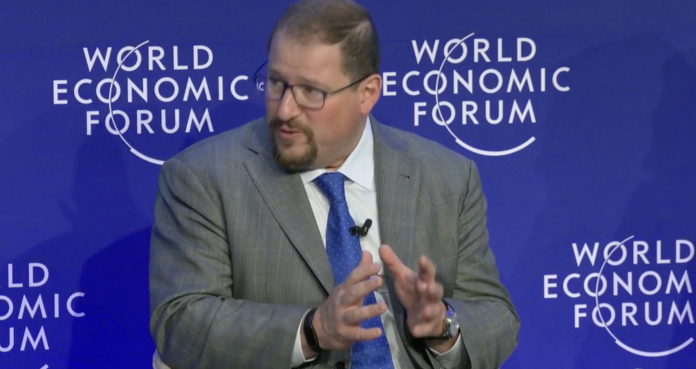Cristiano Amon calls out Qualcomm belief that AR glasses “have the potential to be the next computing platform”
Qualcomm is and has been on a mission to leverage its core expertise in technologies that power mobile handsets to grow market share in spaces like computing, automotive and the industrial internet of things. This is all part of a vision of the “connected intelligent edge” wherein everything is connected, artificial intelligence is distributed outside of data centers, and real-time context improves all manner of consumer and enterprise experiences.
This week at the World Economic Forum Annual Meeting in Davos, Switzerland, Qualcomm CEO Cristiano Amon elaborated on that vision in a panel discussion focused on “Transforming Industries with Frontier Technologies.” Whether in developed or developing economies, digital technologies will be key to economic growth and sustainability, Amon said. “What is interesting is we also see an intersection point of a number of technology trends that are driving the transformation. Devices are becoming all smart, intelligent and connected.”
Back to distributed AI, ingesting, analyzing and facilitating action on data, Amon said today we’re just seeing “the tip of the iceberg. As you bring artificial intelligence, computational capabilities, to all those different devices and they have real context…you’re going to have a different scale.”
Alongside Amon, Sanofi CEO Paul Hudson and Marriott International President Stephanie Linnartz discussed how digital technologies are re-shaping their organizations’ respective approaches to healthcare and hospitality. In response to current actions and articulated visions, Siemens Energy AG President and CEO Christian Bruch said, “If I listen, this will all need electricity. That is good.”
Looking at the trend lines, Bruch said “conservative” projections show that by 2030 there will be 50% more energy generation than today. More realistically, he said, it’ll be double that and even more as companies and industries invest in net-zero strategies. The result, he said, is “You’re going to flip the complete electrical system around…You will need unprecedented level of investment into electrical infrastructure, interconnected grids…steered by a lot of data.”
In this coming paradigm shift, Bruch said that technology isn’t really the impediment; it’s more so around the speed of change authorities and other stakeholders can manage. “It’s change of perspective and willingness to change. It’s not a problem of technology,” he said.
Amon picked up this need for ubiquitous electrification and tied it to ubiquitous connected intelligence. To have this type of integrated critical infrastructure, there has to be conversations focused on ensuring connectivity to distributed networks managed in a way that data can actually be harnessed and turned into something useful and actionable.
Big picture, Amon said, the key is “how do you implement all these things at scale? We’ve been investing early in the fundamental research to enable a fully-immersive experience” that is extended to both humans and machines—think digital twins of everything and whole new types of user interfaces for engaging with these merged cyber/physical systems and environments.
To that end, he said, “We have a little bit of a bold view in Qualcomm. We think augmented reality glasses have the potential to be the next computing platform.”
In its drive to make lightweight glasses the next mainstream computation platform, Qualcomm recently announced its Wireless AR Smart Viewer reference design meant to help OEMs and ODMs “more seamlessly and cost-efficiently prototype and bring to market lightweight, premium AR glasses to enable immersive experiences that unlock the metaverse,” according to a press release. The reference design works with compatible smartphones, Windows PCs, and “processing pucks” and taps Qualcomm’s FastConnect 6900 System and FastConnect XR Software Suite.

